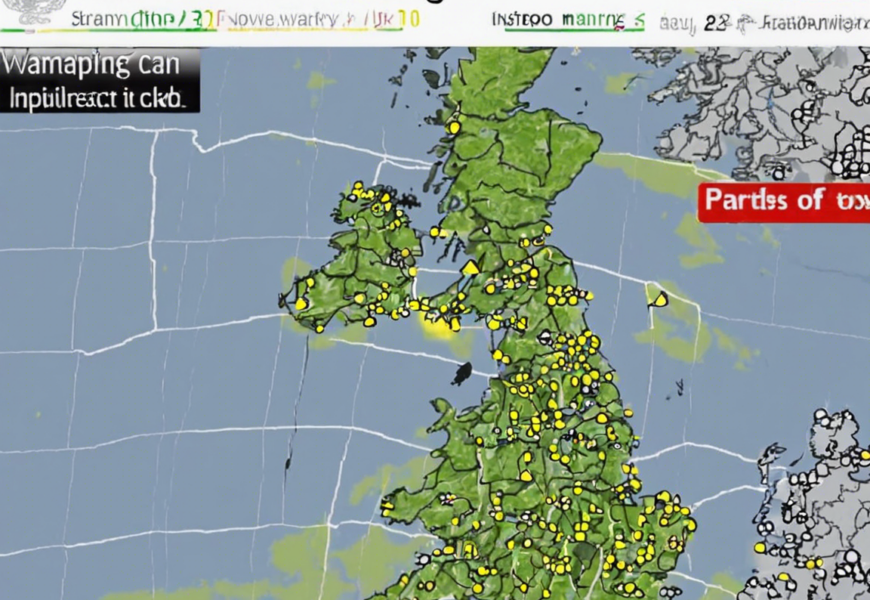Introduction
The Met Office in the United Kingdom is responsible for issuing weather warnings to keep the public and authorities informed and safe during adverse weather conditions. One of the most common weather warnings issued by the Met Office is for thunderstorms. Thunderstorms can bring heavy rain, lightning, strong winds, and in some cases, hail, leading to potential disruptions in daily life. Understanding these warnings and knowing how to stay safe during a thunderstorm is crucial for everyone. This article will delve into the details of Met Office thunderstorm warnings in the UK, what they mean, how they are issued, and what steps you can take to stay safe during these weather events.
Met Office Thunderstorm Warnings
What is a Thunderstorm Warning?
A thunderstorm warning is issued by the Met Office when thunderstorms are expected to occur in a specific region within the UK. These warnings are based on weather models, radar data, and expert analysis by meteorologists to predict areas where thunderstorms are likely to develop. The warnings are color-coded to indicate the severity of the expected thunderstorm, ranging from yellow to amber to red.
Yellow Thunderstorm Warning
A yellow thunderstorm warning means that there is a small risk of disruption due to thunderstorms. This could include localised flooding, lightning strikes, and strong winds. People are advised to stay aware of the weather conditions and be prepared for potential disruptions.
Amber Thunderstorm Warning
An amber thunderstorm warning indicates a higher level of risk associated with thunderstorms. This could lead to more significant impacts such as flash flooding, frequent lightning, and potential damage to property. People are advised to take precautions and be prepared to take action to protect themselves and their property.
Red Thunderstorm Warning
A red thunderstorm warning is the most severe warning issued by the Met Office for thunderstorms. This implies that there is a risk of extreme weather conditions that could cause widespread damage, danger to life, and major disruptions to travel and infrastructure. It is crucial to take immediate action to stay safe during a red thunderstorm warning.
How Are Thunderstorm Warnings Issued?
The Met Office uses a combination of weather models, satellite data, radar information, and expert analysis to predict and monitor thunderstorm activity across the UK. When meteorologists identify conditions that are conducive to thunderstorm development, they issue warnings for specific regions that are likely to be affected. These warnings are updated regularly as the weather situation evolves.
What to Do During a Thunderstorm Warning
Stay Indoors
The safest place to be during a thunderstorm is indoors. Avoid open spaces, bodies of water, tall trees, and metal objects that can attract lightning. If you are outdoors, seek shelter in a sturdy building or a hard-topped vehicle.
Avoid Electrical Appliances
During a thunderstorm, unplug electrical appliances to avoid damage from power surges caused by lightning strikes. Do not use wired telephones or computers during a thunderstorm as they can conduct electricity.
Stay Informed
Keep track of weather updates and listen to local authorities for any emergency instructions during a thunderstorm warning. Having a battery-powered radio can be useful in case of power outages.
FAQs:
1. How far in advance can the Met Office predict thunderstorms?
The Met Office can predict thunderstorm activity a few days in advance using advanced weather models and data analysis. However, the accuracy of these predictions increases as the event draws closer.
2. Can thunderstorms be forecasted with 100% accuracy?
While meteorologists use sophisticated tools to forecast thunderstorms, no weather prediction is 100% accurate. Weather patterns can change rapidly, leading to uncertainties in forecasting thunderstorm activity.
3. What should I do if I am caught outside during a thunderstorm?
If you are caught outside during a thunderstorm, seek shelter immediately. Avoid open fields, tall trees, and metal objects. If you are unable to find shelter, crouch down and minimize contact with the ground while avoiding standing water.
4. Can thunderstorms cause power outages?
Yes, thunderstorms can cause power outages due to lightning strikes damaging power lines, strong winds toppling trees onto power lines, or heavy rain causing flooding in electrical substations.
5. Should I avoid taking a shower during a thunderstorm?
It is advisable to avoid taking a shower during a thunderstorm as plumbing and water pipes can conduct electricity from a lightning strike, posing a risk of electric shock.
Conclusion
Thunderstorm warnings issued by the Met Office are essential for public safety and awareness during severe weather conditions. Understanding the different levels of warnings and knowing how to stay safe during a thunderstorm can help mitigate risks and potential damages. By following the advice of meteorologists, staying informed, and taking necessary precautions, individuals and communities can minimize the impact of thunderstorms and stay safe during adverse weather events in the UK.




